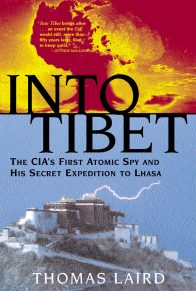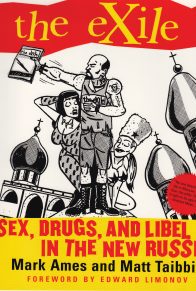“This book presents a much wider range of material than we are accustomed to hearing discussed by His Holiness the Dalai Lama. . . . it is the Dalai Lama’s mastery of a wealth of historical information that makes this captivating reading. He candidly discusses topics such as the early history of Buddhism in Tibet, the first incarnate lama, his memories of Chairman Mao, and his favorite image of the Buddha.” —Tricycle
“A thoughtful dialogue . . . about Tibet’s past not simply as a sequence of events, but as seen through the perspectives of myth, spirituality, morality, human frailty and fate. . . . Will deepen general readers’ knowledge of Tibet, its religion and its engaging leader.” —Kirkus Reviews
“A readable, fascinating account of Tibet’s history from the beginning. . . . Laird teaches a memorable and vivid history lesson about a remote mysterious place that, in terms of its sheer survival, has implications for our own lives.” —Susan Larson, New Orleans Times Picayune
“The 14th Dalai Lama’s fresh account of Tibetan myth and history, as shared at Dharamsala over a three year period with Thomas Laird, is wonderful instruction and a great true pleasure, not less so because of the small informal moments that clarify these encounters with that delightful Buddha being who manifests in the beleaguered public figure of His Holiness.” —Peter Matthiessen, author of The Snow Leopard, National Book Award winner
“Thomas Laird’s lively conversations with His Holiness the Dalai Lama about the history and mythology of Tibet couldn’t come at a better moment, as China stubbornly persists in negating the distinctive Tibetan identity. The honestly, subtlety, and complexity of His Holiness’ thoughts on these crucial matters comes through in these fascinating dialogues. Everyone who cares about Tibet, or about a stable peace in Asia, should read this amazing account.” —Robert Thurman, author of Inner Revolution, Professor of Buddhist studies, Columbia University
“Thomas Laird captures the beauty, the magnificence, the humor of this world spiritual leader, the Dalai Lama.” —James Lilley, former U.S. Ambassador to China and South Korea, and author of China Hands: Nine Decades of Adventure, Espionage, and Diplomacy in Asia
“A tenderly crafted study that is equal parts love letter, traditional history and oral history. . . . Throughout, Laird’s colorful and lively writing brings to life thousands of years of Tibetan history, inviting the reader on his journey to a strange and wonderful land.” —Publisher’s Weekly
“The Story of Tibet: Conversations With the Dalai Lama by Thomas Laird . . . is a work of real value . . . a narrative that is readable, instructive, and at times touching.” —Straight.com
“Deeply absorbing . . . valuable and fascinating . . .” —Mick Brown, The Telegraph (UK)
“A fascinating journey to a strange and wonderful country. . . . An amazing account.” —Robert Maddox, Derby Evening Telegraph (UK)
“The Dalai Lama’s input is invaluable in the telling of a story that has been the victim of disinformation and revisionist history. The result is an authoritative guide to Tibet’s turbulent past (and present).” —Gary Osborn Clarke, Western Daily Press (UK)
“This is the Dalai Lama’s personal look at his country’s past as well as a summary of his life’s work as the leader of the Tibetan people.” —Goof Book Guide (UK)
“The research and academic weight of this study is breathtaking. . . . The cut-and-thrust debate between Laird and the Dalai Lama . . . brings the history alive. Laird reveals much about the personality and human frailties of the Tibetan leader, what rattles him and when he felt acutely betrayed.” —Claire Scobie, The Age (Australia)
“A significant contribution to the outpouring of recent writings on Tibet.” —Harold M. Otness, Library Journal
“Laird uncovers a history of Tibet not found in other books about the country.” —Colette Davidson, Phayul
Praise for Into Tibet:
“Thomas Laird examines a little-known incident in the Cold War and thereby throws a brilliant light upon the character of America’s intelligence and foreign-policy organizations of the time. . . . A fascinating, groundbreaking work on a controversial subject about which few readers will be familiar. Packed with vital new information and insights, Into Tibet fills a blank space in the hidden history of the Cold War.” —Chris Patsilelis, Houston Chronicle
“Helps illuminate what the agency was doing in the birth of the Cold War . . . A gripping tale.” —James Rupert, The Washington Post
“A scrupulously documented account of Cold War intrigue . . . [Provides] a detailed view into the CIA’s shadowy world and the havoc it wreaks on individual lives . . . A grippingly good narrative.” —The Village Voice
“Into Tibet brings alive the remarkable adventure of two American Heinrich Harrers and an event the CIA would still, more than fifty years later, like to keep quiet.” —Bruce Barcott, Outside Magazine













